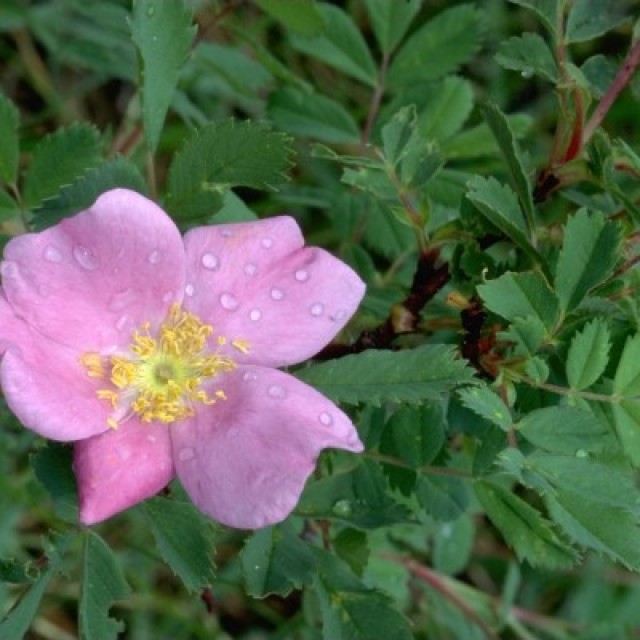COMMON NAME
Woods' rose
SCIENTIFIC NAME
Rosa woodsii
ALSO KNOWN AS
Wild rose
Plant family
Rose (Rosaceae)
Plant group
Deciduous Trees and Shrubs
Native roses are similar to garden roses but usually have fewer petals, well defined entire sepals and only scattered prickles along the stem.
326 reports
76+
OBSERVERS
326+
OBSERVATIONS
Identification hints
Native roses are similar to garden roses but usually have fewer petals, well defined entire sepals and only scattered prickles along the stem. This rose generally has 5 pinkish petals. The fruits are rose-hips that turn red when ripe.
Did you know?
The berries of Three-leaf sumac are edible and have been used in teas and baked into breads. The berries are slightly sticky and have been said to have the faint scent of lime. Animals and insects pollinate this shrub and later help spread the seeds when they eat them. This shrub can also resprout from roots.
DISTRIBUTION IN TH U.S.
Alaska
,
Arizona
,
California
,
Colorado
,
Iowa
,
Idaho
,
Kansas
,
Minnesota
,
Montana
,
North Dakota
,
Nebraska
,
New Mexico
,
Nevada
,
Oklahoma
,
Oregon
,
South Dakota
,
Texas
,
Utah
,
Washington
,
Wisconsin
,
Wyoming
HABITAT
Woods’ roses are common dominant species on river (riparian) edges and wetland sites. You'll also find them as common pioneers on disturbed sites, especially along roadsides and south-facing cutbanks. They occur on bluffs, dry grassy slopes, prairie sandhills, and in clearings in boreal and subalpine forests; also as understory species in stands dominated by cottonwood, ponderosa pine, and Douglas fir.
ATTRIBUTES
Leaves
Leaves are deciduous, alternate and odd-pinnately compound. This means that what appears to be the leaves are actually the leaflets and are arranged in pairs along a central axis called a "rachis". The 5 to 7 (to 11) leaflets are oval-shaped and about 0.5 to 1.5 in (1.25 to 3.75 cm) long. They are finely toothed toward the tip.
Flowers
The pink to lavender colored flowers appear on the branches that laterally grow from the old wood. They are 4 to 8 in (10 to 20 cm) long and usually grow with a few in a cluster at the stem tip. Solitary ones are found as well. They are usually persistent and have short, dense, matted hairs on their margins. Flowers bloom in late spring and summer.
Fruits
Woods’ rose hips are red, fleshy, and round, about 5-12 mm wide.
Bark
The stems are reddish-brown to gray, with straight or slightly curved prickles.
See Menu
- 2021 Chicago Botanic Garden. All Rights Reserved.
-
Creative Commons
BY-NC-SA 4.0 - Terms of Use
- Privacy Policy
- Data Sharing and Citation Policies
- 2021 Chicago Botanic Garden. All Rights Reserved.



